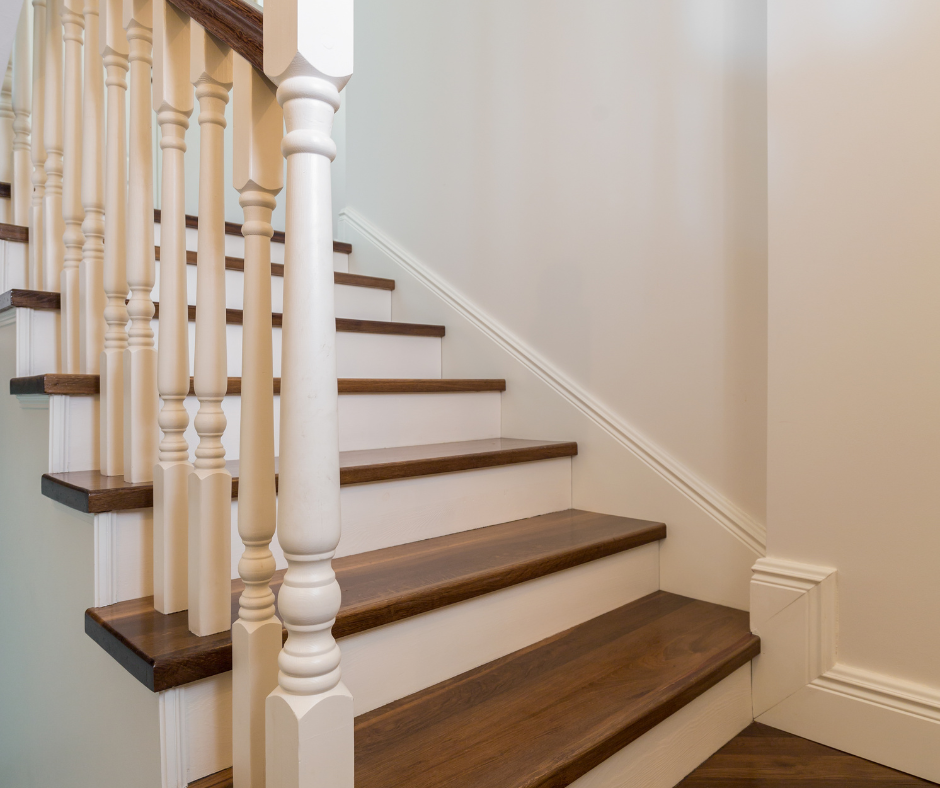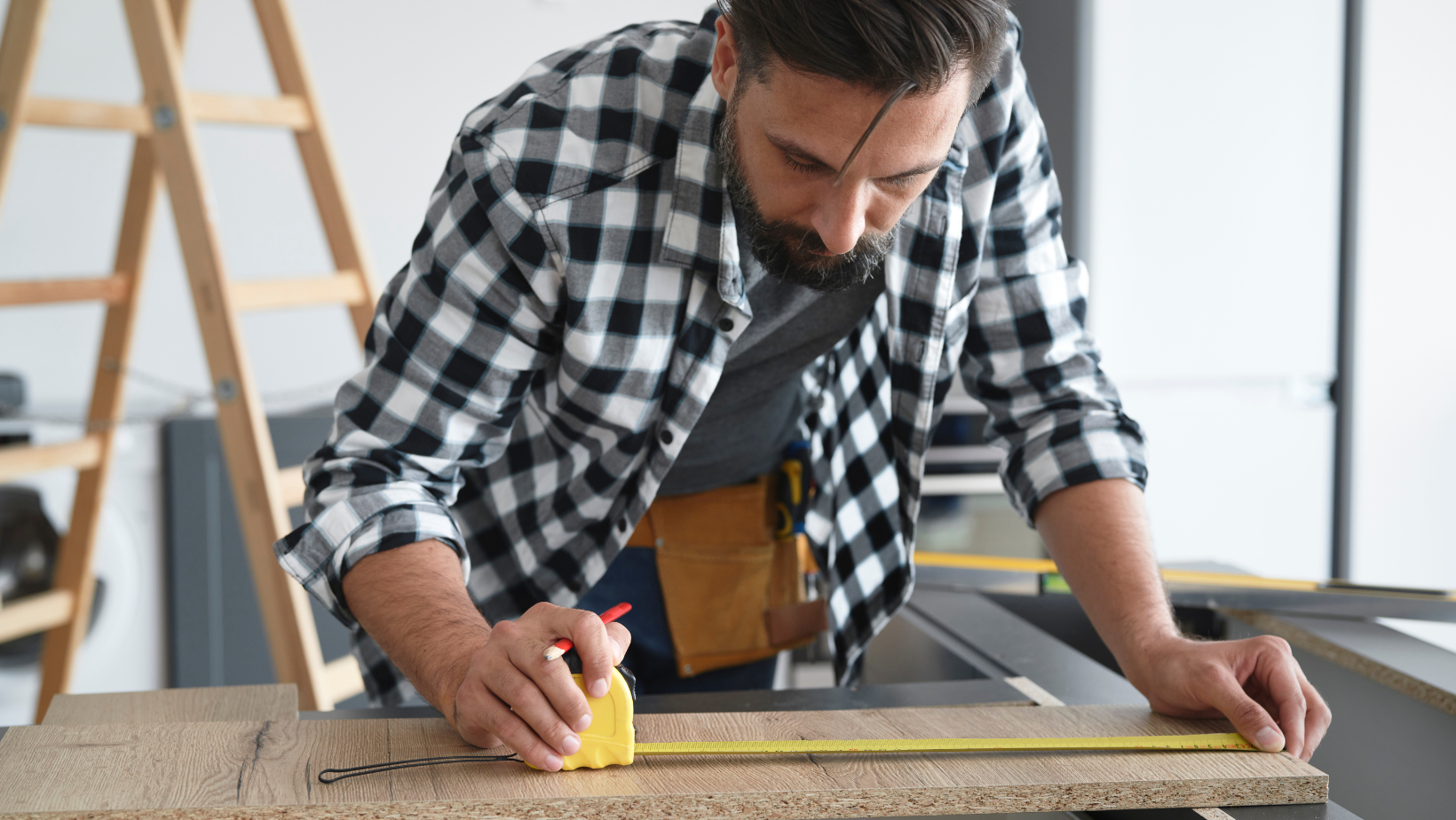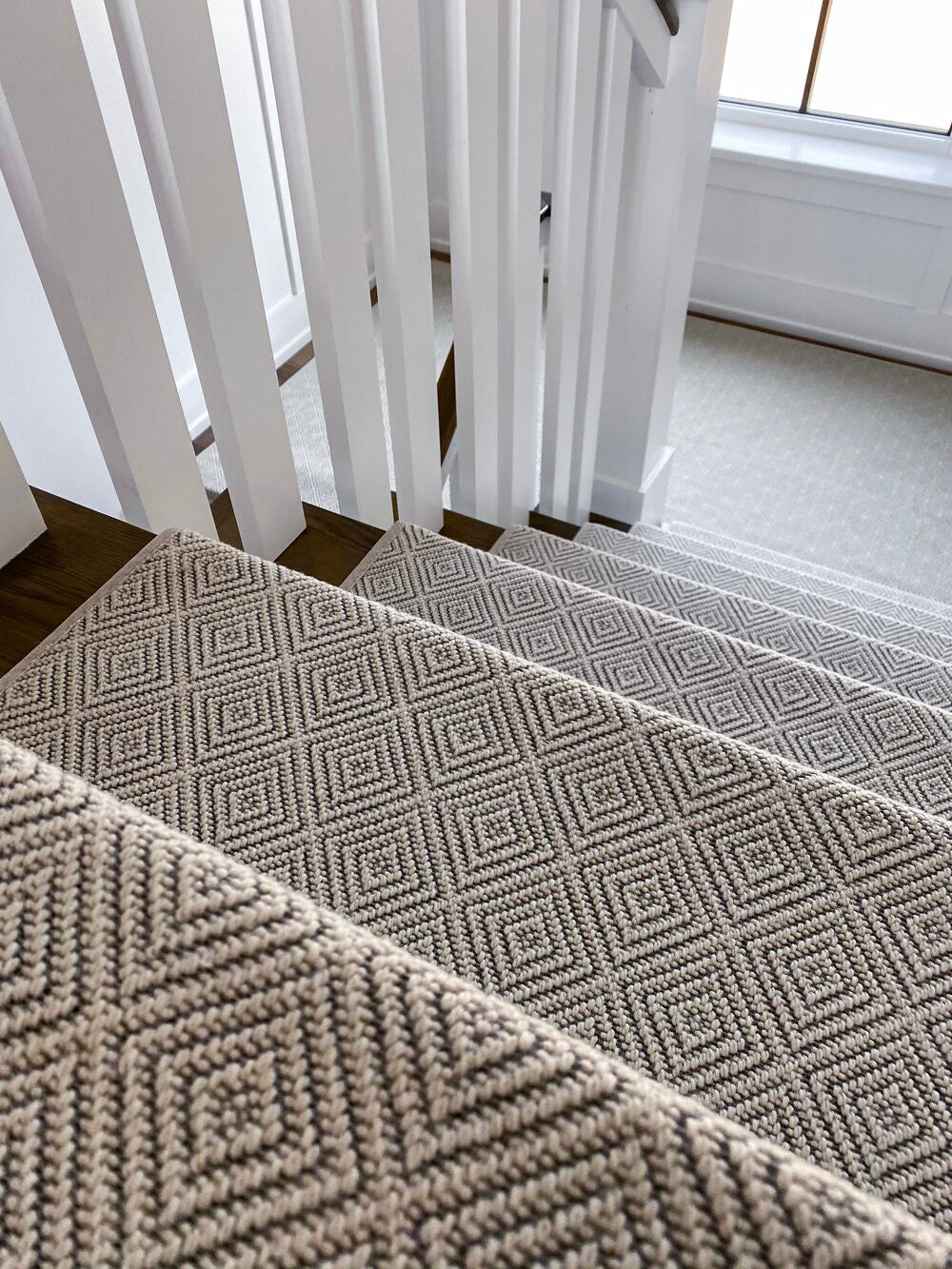Stairs do more than connect levels—they create flow, safety, and style in your home.
The parts of a stair tread include the tread, riser, stringer, nosing, balusters, handrail, and trim, each serving a structural or safety function.
Understanding these components helps you make informed decisions when building, renovating, or adding features like carpet stair treads.
In this guide, you’ll learn how each part works together to form a staircase that’s both durable and design-forward.
We’ll also explore options for improving safety and comfort without sacrificing visual appeal.
Whether you're upgrading for style or functionality, this breakdown gives you everything you need to move forward with confidence.
Main Parts of a Staircase
Every staircase is made up of several key components. Together, they support structure, safety, and design.
Let’s explore each one.
Tread
The tread is the horizontal surface you step on.
It’s the most visible and most used part of the staircase, so it must be built with both strength and comfort in mind.
Carpet stair treads are often added to improve grip, reduce noise, and create a softer step underfoot.
In luxury applications, treads may be crafted from hardwood, covered in premium wool, or finished with personalized edges and trim.
Riser
The riser is the vertical panel between each tread.
It adds structure and helps shape the overall slope of the staircase.
Some stairs skip the riser entirely—this style is known as open risers stairs.
This look creates an airy, modern feel but may require extra attention to safety, especially in homes with children or pets.
Stringer
Stringers are the long, angled boards that run along each side of the staircase.
They provide the main structural support, holding up the treads and risers.
Stringers can be open (visible from the side) or closed (hidden behind the wall or trim).
In many homes, decorative trim or skirt boards are placed over the stringers to enhance the finish.
Nosing
The nosing is the front edge of the tread that sticks out slightly past the riser.
It gives your foot more space when stepping and helps reduce slipping.
Nosing can be rounded, squared, or beveled, depending on the design.
When combined with carpet stair treads, the nosing adds both safety and a polished visual effect.
Balusters (Spindles)
Balusters are the vertical posts that sit between the treads and the handrail.
They keep you safe by preventing falls off the side of the staircase.
Balusters can be simple or ornate and are often used as a design feature in upscale homes.
They’re sometimes called spindles and are typically made from wood, metal, or composite materials.
Handrail
The handrail runs along the top of the balusters and offers a grip as you move up or down the stairs.
Handrails must be secure, smooth, and continuous for safety.
They can be mounted on the wall or supported by balusters or newel posts.
Their design can be minimal or detailed depending on the overall style of your home.
Newel Post
Newel posts are the large structural posts found at the beginning, end, or corners of a staircase.
They serve as anchors for the handrail system and often become a visual focal point.
In custom staircases, newel posts may be turned, carved, or box-shaped and can include design elements that match the balusters or treads.
Knowing how to install a stair newel post correctly is essential to ensure structural safety.
Skirt Board or Stair Apron
This is the trim or molding that runs along the side of the stairs, covering the edges of the treads and risers.
Also called the stair apron, it adds a finished look and conceals the stringers and raw edges.
While not structurally necessary, it greatly enhances the visual flow of a staircase.
How Each Stair Part Works Together
Each part of a stair tread works as part of a larger system.
The treads provide surface, the risers set the height, the stringers offer structure, and the nosing extends safety.
Balusters and handrails form the protective framework, while trim and finishing pieces tie everything together visually.
This relationship between function and design is where quality craftsmanship really stands out.
When each part is carefully considered and installed, your staircase becomes more than just a means of getting from one floor to another—it becomes a feature in your home.
Open Risers Stairs and Their Impact on Stair Tread Design
The popularity of open risers stairs has grown in modern homes, thanks to their light, minimalist look.
Instead of including a vertical riser, these stairs leave the space open between treads.
This makes the staircase feel less bulky and allows natural light to pass through.
However, the absence of a riser means the treads themselves must carry more structural load.
In many cases, thicker treads and stronger fasteners are used to support safety and longevity.
In homes with children or pets, additional safety measures—like grip-enhanced treads or added riser inserts—can help make open risers stairs a safer option.
What Holds Stair Treads in Place?
Treads are secured to the stringers using a combination of fasteners and adhesives.
Common methods include:
-
Screws or nails driven into pre-drilled pilot holes
-
Brackets or angle irons placed beneath the tread
-
Construction adhesive for additional grip
-
Hidden hardware for floating or open designs
In staircases without risers, treads may also be reinforced with metal supports or thick wooden brackets for added safety.
Quality installation is key, especially for floating or open stairs, where visible gaps mean there’s little room for error.
Other Key Staircase Elements
While the core parts of a stair tread are essential, there are a few other components that support performance, code compliance, and aesthetic appeal.
Staircase Landings
A landing is a level area between flights of stairs.
It’s often used to change direction or give users a break in long stair runs.
Landings are essential in homes with multiple floors and also increase safety by reducing the number of consecutive steps.
Staircase Lighting
Good lighting does more than highlight your design—it prevents accidents.
Options include recessed lighting in the wall, under-tread lighting, or motion-sensor lights.
If your home has open risers stairs, lighting can be integrated beneath the treads to emphasize the floating effect while improving nighttime visibility.
Safety Features to Keep in Mind
Design and safety should never be in conflict.
Simple upgrades can dramatically increase the security of your staircase without compromising its look.
Some ideas:
-
Add non-slip carpet stair treads to improve grip
-
Ensure your handrail is continuous and easy to grip
-
Keep gaps between open risers below 4 inches for child safety
-
Use rounded or bullnose nosing to minimize trip hazards
-
Apply soft under-padding to reduce foot strain and noise
Many of these details are subtle—but they make all the difference in a busy home.
Material Choices and Their Impact on Performance
When it comes to stair treads, material matters.
Here are the most common options:
-
Hardwood: Classic and durable, perfect for homes seeking a timeless or upscale aesthetic.
-
Wool Carpet: A premium option for carpet stair treads. Naturally stain-resistant, long-lasting, and soft.
-
Synthetic Fibers: Durable, affordable, and available in a variety of patterns and textures.
-
Vinyl or Laminate: Low-maintenance alternatives ideal for high-traffic areas.
Oak Valley Designs offers handcrafted stair treads in both wool and synthetic blends—tailored to match your style, your needs, and your staircase layout.
Whether you're looking to protect hardwood stairs or soften your steps, these options blend function and design beautifully.
Stepping It Up
Understanding the parts of a stair tread and how each one contributes to the whole staircase gives you control over safety, style, and structure.
From the tread beneath your feet to the trim that finishes the look, every element matters.
If you're planning a stair upgrade, remember that even small changes—like adding carpet stair treads or selecting a more secure nosing—can transform the way your stairs look and feel.
The best staircases aren’t just built. They’re crafted—with intention, safety, and beauty in every step.
Contact Us Today!
Looking to enhance your stairs with luxury and safety?
Oak Valley Designs offers handcrafted stair treads that transform your space.
-
Website: https://oakvalleydesigns.com/
-
Phone: 706.331.0315
-
Email: info@oakvalleydesigns.com
-
Address: 30 River Ct SW Bldg E Cartersville, Ga 30120




